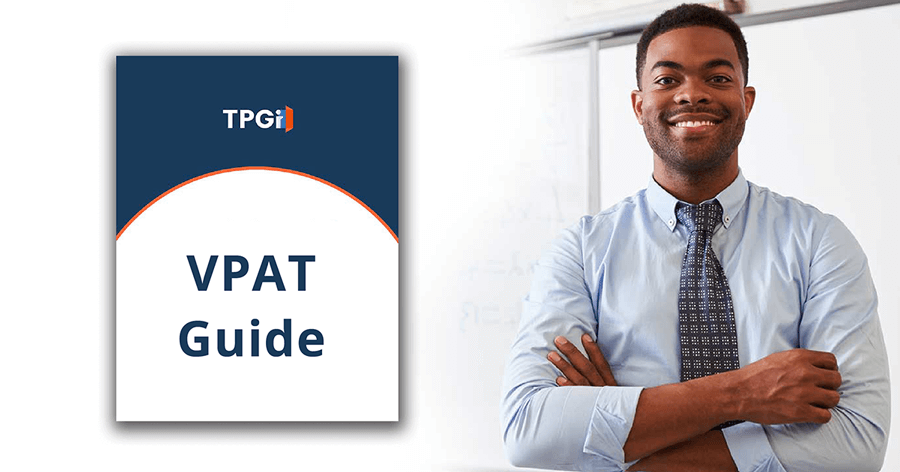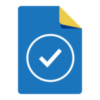Let's talk about the VPAT.

Download your free VPAT guide
Learn why you should get a VPAT, how to get a VPAT report, and more!
What is the VPAT?
At its core, a Voluntary Product Accessibility Template (VPAT) is a template used by the US Federal and state governments and other entities as an assessment tool to evaluate how well digital content conforms to Web Content Accessibility Guidelines (WCAG) and Section 508 requirements.
Section 508 is an amendment to the Rehabilitation Act of 1973, which prohibits the Federal government office or vendor of the Federal government from discriminating on the basis of a disability. Digital product buyers inside and outside of government rely on these statements to “buy accessible.” A growing number of buyers consider accessibility an important factor in choosing a vendor.
What You Need to Know About VPATs
That depends. Does your organization want to conduct business with the Federal government or any vendor they use? If the answer is yes, then, yes, you need a VPAT. Even if your organization is not inclined to conduct business with the Federal government or one of its vendors, a VPAT is still a very useful resource.
Because the Americans with Disabilities Act (ADA) does not include explicit criteria pertaining to digital accessibility, there is ambiguity when attempting to clearly differentiate “accessible” and “inaccessible” digital content. Even though WCAG are universally accepted as the de facto guidelines for digital accessibility, many of the criteria are not cut-and-dry. Physical ADA standards (such as the number of accessible parking spaces or elevators in a building) are far more defined.
Understandably, organizations looking to provide irrefutable evidence that their digital content is accessible are often frustrated by this lack of clarity. This is where a VPAT can be useful to an organization, as it is clear documentation on how your digital product conforms to WCAG criteria. Even organizations that are not interested in conducting business with the Federal government (even outside the US) can benefit from this. You can use the VPAT to demonstrate conformance anywhere a law or policy requires accessibility.
A VPAT provides a clearly defined standard against which any organization can measure its accessibility. Section 508 requirements map to WCAG, and by the nature of the officiality of the VPAT itself, organizations that can show they conform to the Section 508 requirements are seen as more credibly accessible.
Not only that, but in undergoing the process to fill out the VPAT, firms frequently unearth accessibility failures that had previously gone unaddressed. If they remediate these errors, they will emerge with better, more accessible content. Talk about a win-win situation!
Well, for one, they are quite complicated. Organizations that do not possess substantial accessibility knowledge will be at a disadvantage, as it’s not easy to pick up this type of in-depth subject matter expertise on the fly. Firms often rely on accessibility consultancies like TPGi to fill out a VPAT for them.
In terms of ensuring accessibility for people with disabilities, a VPAT is only as good as the person reviewing it and the level of candor and transparency of the vendor that completes it. Despite its best efforts to be precise, a VPAT still offers firms the ability to remain somewhat ambiguous about accessibility failures. An organization could be less than wholly forthright and still complete a VPAT that makes their product look highly accessible.
Despite its limitations, a VPAT can be a valuable resource for any organization, regardless of its clientele. If your company needs assistance in filling out a VPAT, the experts at TPGi will be happy to help! Contact us today.
How TPGi Can Help
Start with an Accessibility Audit
Assessing the accessibility of your digital products and making a plan is one of the first steps in creating your VPAT.
Develop a Strategy
Your success depends on developing a prioritized roadmap that will act as a guide if times get tough and you don’t know what to work on next.
Create your VPAT
Assessing the accessibility of your digital products and making a plan is one of the first steps in creating your VPAT.
VPAT® 101: Introduction to the Voluntary Product Accessibility Template
A Voluntary Product Accessibility Template (VPAT) is a great way to document your product’s accessibility, but many companies are unaware of their existence and how to use them. Join Accessibility Engineers Brian Elton and Mitchell Evan from TPGi for answers to questions such as:
What information is contained in a VPAT?
- Is a VPAT just for websites?
- Is every organization required to have one?
- How can a company secure a VPAT?
- Is it better to create it in-house or get a third party involved?
TPGi’s webinar will answer those questions and more, and explain how your organization can benefit from a VPAT.
Unable to register?
If you are using Internet Explorer and have cookies disabled (either via privacy mode or decline cookies on the website), you may not be able to register through this form.
If you are unable to register, please email ida@tpgi.com with your name and contact information. Ida will arrange the registration on your behalf.
Access the recording and resources
VPAT® 101: Introduction to the Voluntary Product Accessibility Template



